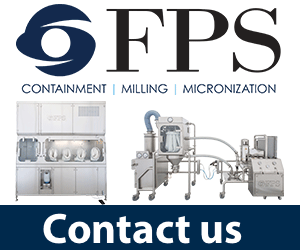Energy Efficiency Consultancy EECO2 undertook a recent study to look at safely reducing fume cupboard capture face velocities (CFV) using CFoils from Mach-Aire to reduce fume cupboard energy consumption.
To remain competitive, pharmaceutical companies can no longer afford to continue to run over-compliant facilities that offer no additional benefits to product quality. Mach-Aire, a global specialist in the design and manufacture of fume cupboards, containment systems and aseptic pharmacy cleanrooms, recently patented an aerofoil device called a CFoil,1 which is designed to improve the containment (robustness) performance of fume cupboards, regardless of the air velocity at which they are operating.
By improving the containment of a fume cupboard it is possible to reduce safely the capture face velocity (CFV), reducing energy consumption and operating costs.
Fume cupboard manufacturers have improved their designs to achieve high levels of containment at a range of velocities. However, some existing facilities have many fume cupboards installed that may not be able to provide adequate containment, particularly ‘robustness of containment’ performance as prescribed in EN 14175-3:2003 Item 5.4 at low-face velocities.2 The Mach-Aire CFoil can be deployed in such situations to enhance the performance.
Energy Efficiency Consultancy (EECO2) conducted an independent study of the CFoils to determine the potential benefits of using the device as an aid in reducing fume cupboard energy consumption.3 The project was carried out in a pharmaceutical laboratory complex in the North East of England and the EECO2 approach was to identify and reduce energy demand without compromising operator safety. Comparison results were based on containment robustness testing using SF6 gas as defined in ISO 14175 also backed up with smoke visualisation tests to show air flow patterns.
The objective was to look at safely reducing fume cupboard Capture Face Velocities (CFV) to realise the resultant HVAC energy savings (fan motor energy, heating and cooling). The face of the hood is the opening where air capture takes place and face velocity is the speed of the air across the face. It is used as an indicator of the hood’s performance.
As a result of EECO2’s evaluation the following observations were made:
A typical lab fume cupboard face velocity target set point is 0.50m/s; after a safety allowance the fume cupboard is typically set to operate at 0.55m/s. Modern fume cupboards are designed to be operated at 0.30m/s (under ideal conditions), which when installed in real lab conditions is typically 0.40m/s.
Installation of CFoils improves the containment robustness of the fume cupboard by reducing the impact of certain external influences, such as an operator walking past, thus enabling the safe reduction of the capture face velocity without compromising operator safety. However, because the CFoils are designed to improve the containment robustness they will not improve the performance of an existing, poorly performing fume cupboard.
The results: At 0.4m/s an improvement of between 30% and 50% in containment robustness was seen when the CFoils were installed, enabling the cupboard to provide a similar protection when operating at 0.5m/s without CFoils.
However, these benefits are dependent on fume cupboard design, i.e. a fume cupboard that is older than 15 years is not designed to operate at a face velocity of <0.5m/s and, thus, the CFoils may not improve containment sufficiently. Tests with CFoils on cupboards that were older than 20 years did not demonstrate any improvement in containment robustness.
Significant energy savings in fan, heating and cooling energy were identified due to the subsequent reduction in the required fresh air volume following installation of CFoils. These benefits vary depending on the supply and extract control system of the fume cupboard and lab.
Finally, installation was found to be quick and easy with very little downtime and the change was achieved at relatively low cost compared with running at a higher face velocity or replacing the fume cupboard.
Mach-Aire has installed CFoils at a number of test sites in the UK, and has achieved excellent results.
References
1. Patent Applied (UK Application No. 1117890.2)
2. The robustness test is described in EN 14175 and tests the capability of a fume hood to maintain containment during external, standardised disturbances
3. The full report with the containment test results and smoke visualisation videos are available upon request from EECO2





